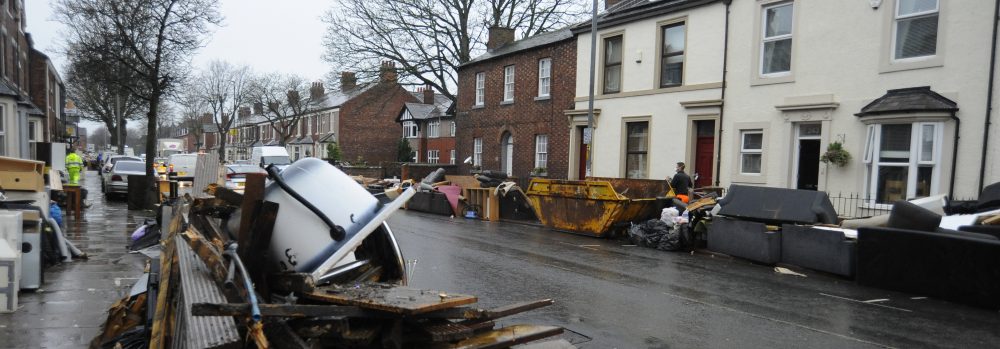This is Sally’s story about what happened to her with some key learning points at the end…
Background
On the evening of 9th February 2014, after days of persistent rain, seven severe flood warnings (the highest category) were put in place for the River Thames in north Surrey. Residents were evacuated and roads and schools were closed. The Staines area experienced clusters of events involving tidal, river, rainfall and groundwater flooding. These four stories, taken from our ‘Children, Young People and Flooding: Recovery and Resilience’ project, show how flooding can reveal, and even exacerbate, existing social vulnerabilities.
Sally, aged 11 years, lives in a house with her parents; her dad is a wheelchair user. Sally saw the weather forecasts on television and was aware that severe flooding was forecast for her local area, so (unlike her parents) she packed a suitcase ‘just in case’ she had to leave home.
However, Sally’s impression of being evacuated was also bound up with images of people being relocated to hotels as if they were going away on holiday, so she packed ‘some special dresses’ that she thought would be nice to wear at the hotel. Unfortunately, Sally’s family was evacuated to a small hotel with cramped rooms unsuitable for disabled guests, which Sally said was ‘really hard’ for her dad. Not only had she forgotten to pack her school uniform but she didn’t get to wear her special dresses because it was ‘too expensive’ to use the hotel restaurant.
Sally told us that when her family was moved into temporary accommodation, the family experienced additional distress. In the first hotel, they were placed in a room with a tiny en-suite bathroom which was not accessible for wheelchair users. In the cramped conditions, her dad injured himself whilst trying to wash. The family was then moved into more suitable accommodation but were forced to move again. Coming on top of the shock of the flooding, this had the effect of making the family feel isolated and misunderstood.

‘The hard work of recovery’ model created by one of the young people from the Children, Young People and Flooding Project
Sally’s story reveals that there can be multiple problems associated with evacuation, which are sometimes invisible to friends, teachers, insurers, loss adjusters and emergency planners.
Her experience demonstrates the need for better education for householders on what action to take in case of flooding and for policymakers and practitioners to be more inclusive of the needs of communities, including those of children and disabled people.
Key Points
- Evacuation results in poor health and wellbeing
- Shows a child’s perception of evacuation
- Placement in inappropriate temporary accommodation
- Injury sustained by wheelchair user
- Family experiences of multiple displacements
- Challenges of creating a flood resilient accessible family home
- Lack of care in society by others who ‘don’t get it’
Please reference as: Flooding – a social impact archive, Lancaster University
